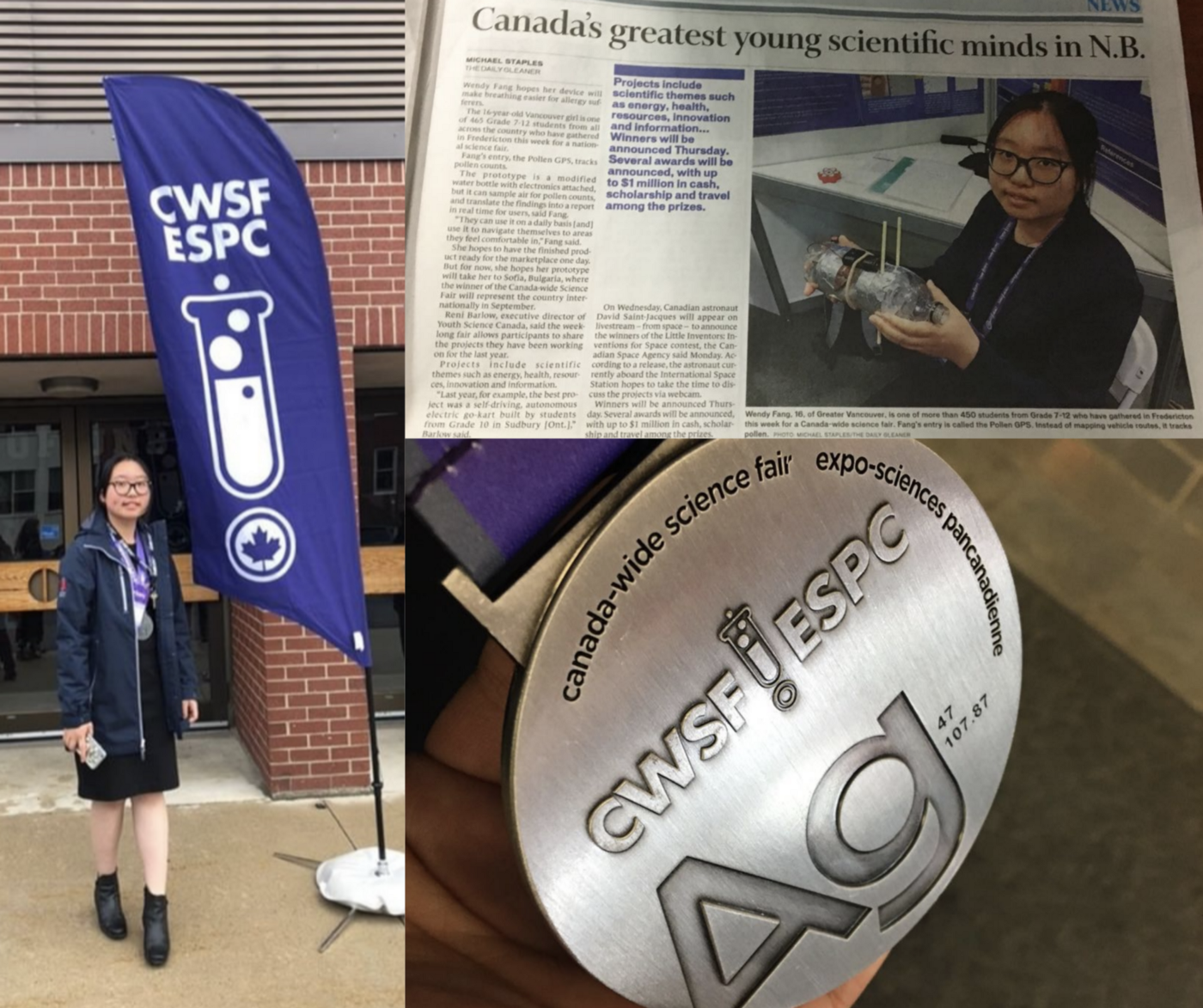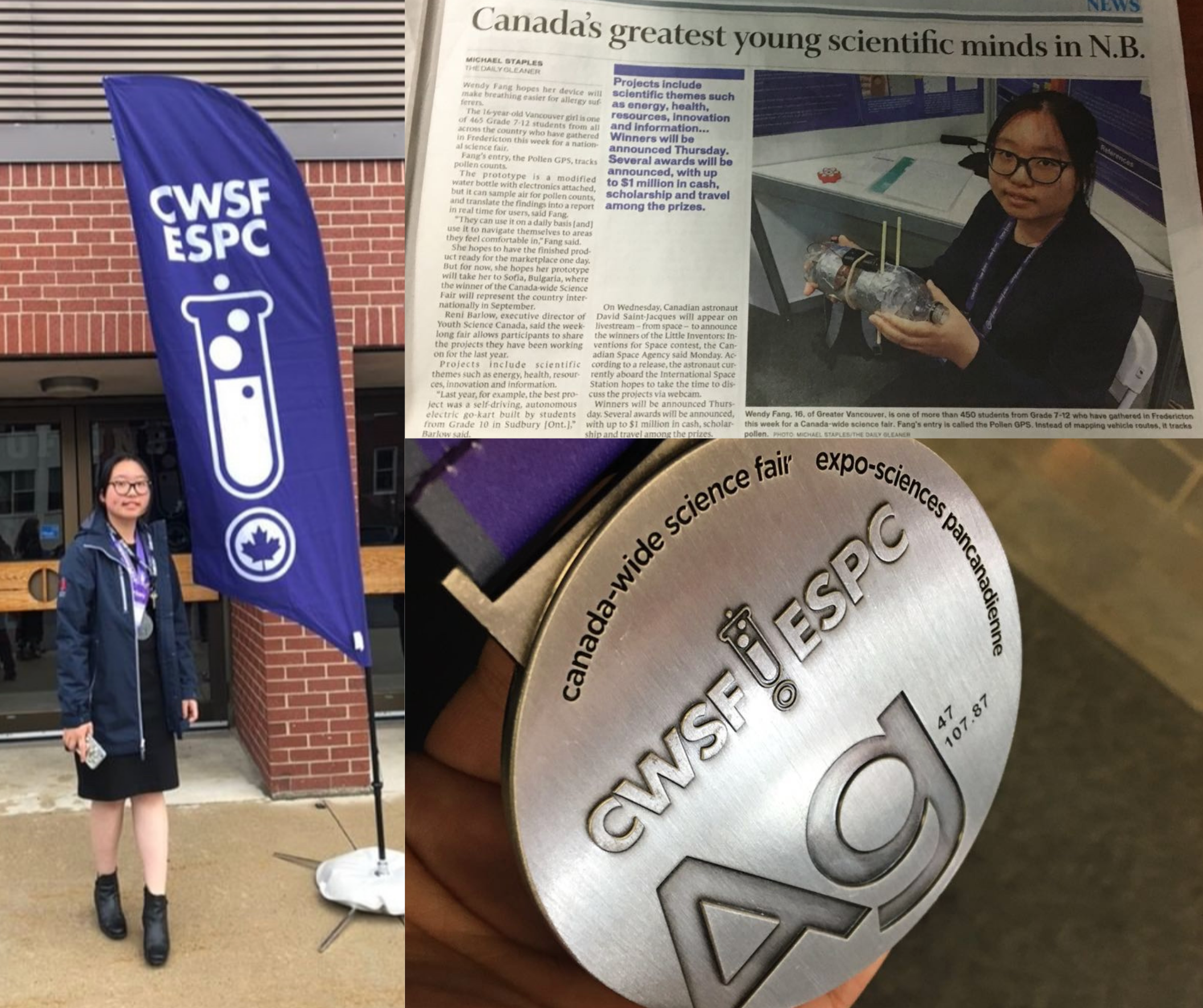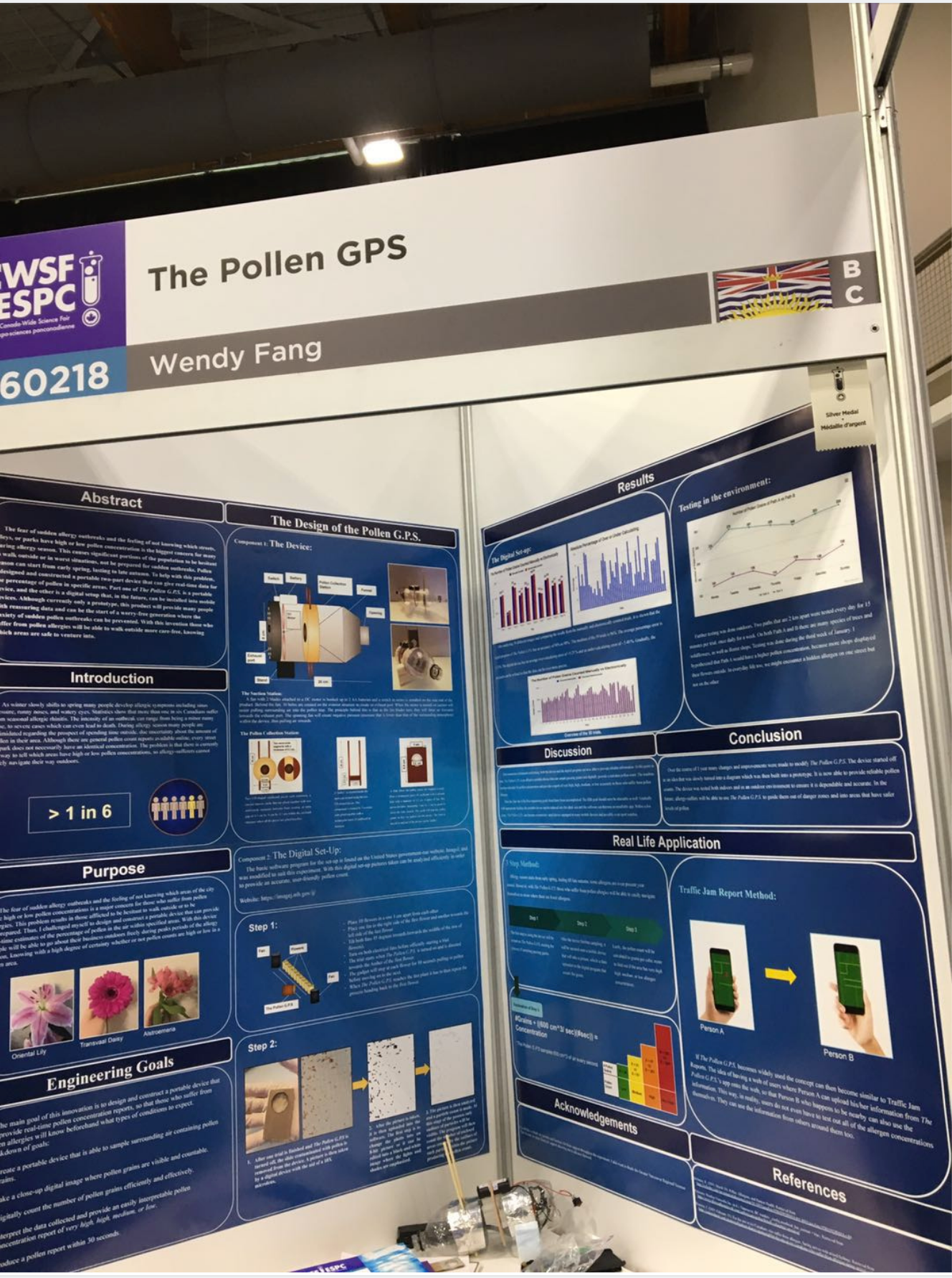Wendy Fang: SCWIST Ms. Infinity Education Scholarship Science Fair Winner
Back to Posts
Hello! My name is Wendy and I am a grade 10 student from the Greater Vancouver Region of British Columbia. I’ve recently come back from an unforgettable week at the Canada-Wide Science Fair.
At the fair I met so many amazing people who are dedicated to the field of Science. Overall, I won a silver medal in the intermediate category along with the opportunity of being featured in the headline of the Fredericton newspaper. When attending the fair I was not expecting to receive any awards at the national level — having one of the 409 projects at the fair was already an accomplishment for me. To me one of the biggest rewards was the opportunity to share my project with peers, scientists, and the general public. When receiving the medal I felt completely dumbstruck; additionally, having the opportunity one morning to read the newspaper and find out that I was on the front page was unimaginable. Thus, having an article about my project in the city’s newspaper was an experience I’ll never forget.

Growing up, medical science in particular has always been the main area of my interest. Always curious about pioneering health improvements and breakthroughs, I stumbled upon the problem of allergy outbreaks. The project started around a year-and-a-half ago when my friend from another province came to visit me and she then experienced severe pollen allergies. I personally do not have any allergies, so growing up I was never really aware of allergy seasons. After conducting research, I was shocked to discover that more than one out of six Canadians suffer from allergies. Consequently, I wanted to find a way to help those people. My ultimate goal was to create a portable device that would be able to provide real-time pollen concentration reports to those who suffer from allergies, so these people would be able to find areas that were safer.
My science project is called The Pollen G.P.S. It is a two-part program that can calculate real-time pollen concentrations. The first part is a portable device that samples the air in our environment that is contaminated with allergens. Inside the device there is a trap that extracts the grains from the air pulled in. The second part is a digital platform that takes the data from the portable device and estimates pollen concentrations.

Throughout my project so far I’ve been working independently at home; nevertheless, I hope to, in the near future, team up with a mentor who is as enthusiastic as I am about this project to continue to develop it, so that one day my project can become a successful product in the marketplace allowing allergy-sufferers to walk anywhere outside during peaks periods of the allergy season, knowing with a high degree of certainty whether or not pollen counts are high or low in a given area.
In the future, I hope to continue to advance my knowledge and education via the Faculty of Science and hopefully one day become a doctor who can make a difference to society. My advice for students who are also interested in attending a science fair would be to research a topic that really interests them, because science projects, in general, require a lot of motivation, time, and enthusiasm to complete.